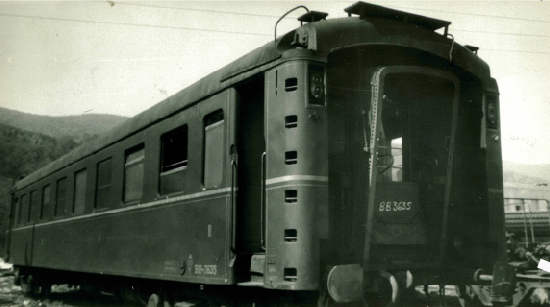


The first Sunsundegui workshop was founded in Irun in 1944 by Irun businessman Jose Sunsundegui.
The strategic location of the town, on the border between Spain and France, led to the location of the company, initially dedicated to the repair of railway equipment. The company moved to the Navarre town of Alsasua, an important point of railway development in the 20th century. At that time it was dedicated entirely to the repair of Renfe trains. When the state-owned company began to set up its own repair shops, Sunsundegui had to adapt to the new times.

In this situation, a new management group took over the company, which adapted its services to the repair and bodywork of trains and introduced the bodywork of buses and coaches.
The model designed for its expansion was the Korinto. Mounted on a DAF SB 3,000 chassis, with DKX 1,160 Ati engine, it had a transport capacity of 54 passengers in reclining seats, in addition to the driver and guide. The elements that characterized it at that time were the incorporation of air conditioning, heating by convectors, constant renewal of the interior air and the trunk capacity of approximately 10 m³.

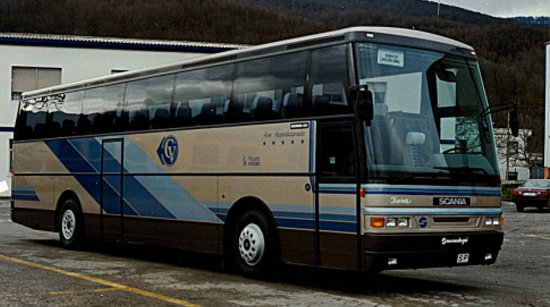


In this decade Sunsundegui manufactured one of the models with which the company earned its reputation as a high quality coachbuilder: the Sunsundegui Stylo.
For several years, it was the coach of choice for the majority of large road passenger transport companies such as Alsa. A large part of its fleet consisted of this model, which was mounted on Mercedes 0-404 chassis. There was also the Articulated Stylo.
During these years the following models were also produced Vardimodels, which was a high-floor articulated coach and the VardinoThe company broke the mold in the coach production and bodywork sector with these high-floor rigid coaches. During this period, the company also produced special vehicles for different events, such as the now emblematic Sunsundegui Vardi which Sunsundegui coachbuilt for the 1992 Universal Exposition held in Seville.

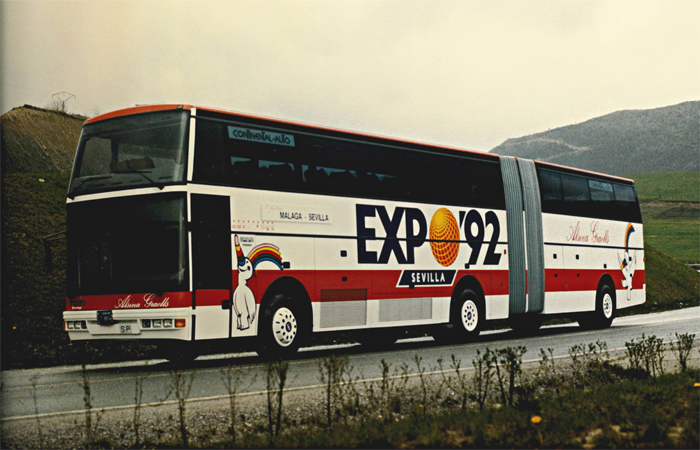
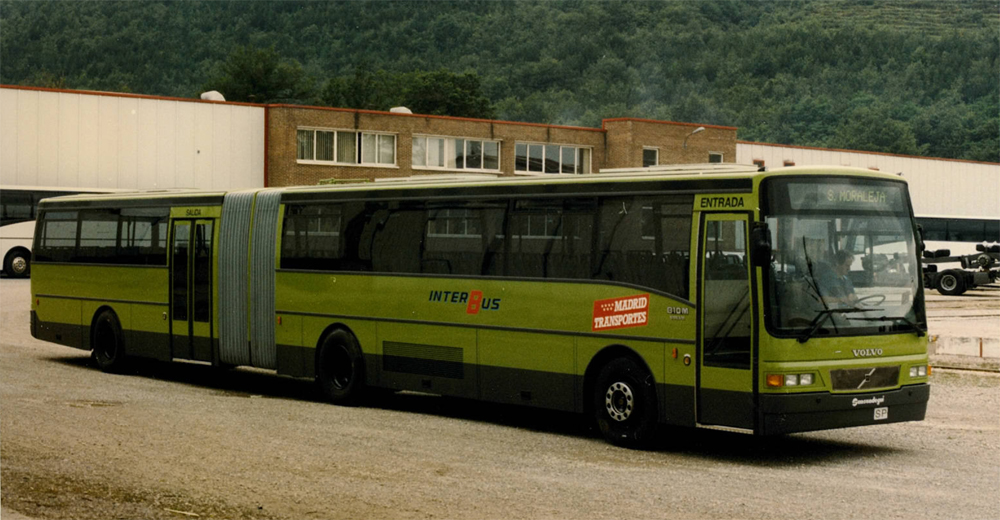

Sunsundegui began to take off, thanks to the export of its vehicles to countries such as Israel and the United Kingdom. This led it to sign an important commercial agreement with Volvo to body the Swedish company’s motorized platforms, thus marketing a single product.
It was in this decade, specifically in 1993, when Sunsundegui created the Interstylo, with ample access spaces for passengers and adapted to disabled people, giving priority to passenger ergonomics. This model was also highly valued in the market for its robustness and reliability, in addition to its design.

This year Sunsundegui launches a new model: The Sunsundegui Sideral Sunsundegui Sideral. This vehicle stood out for its design of wide curved lines, for its great equipment and robustness. It set the standard for what future coaches were to be in terms of design. Once again, it was a vehicle with a great commercial success that helped to consolidate Sunsundegui’s reputation as a good coachbuilder and served as a model for the evolution towards what was later called the “Sunsundegui”. Sideral 2000.

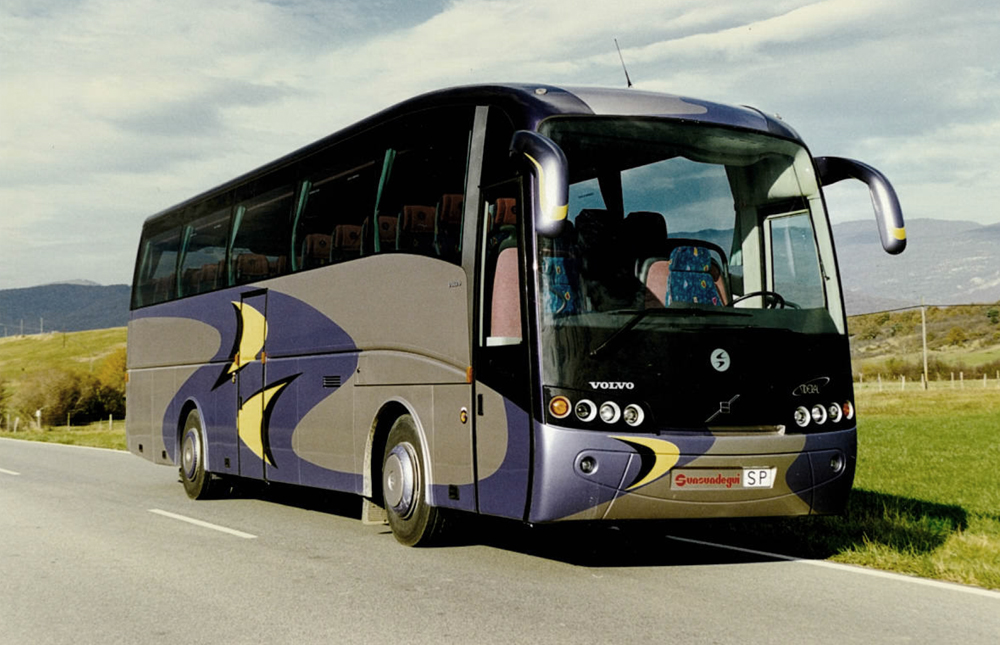
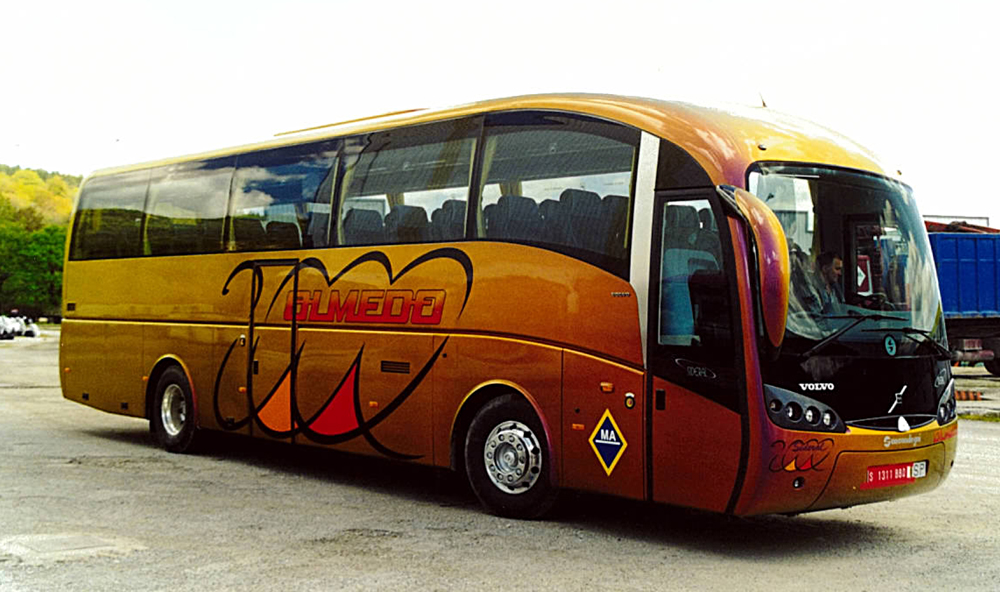


Four years after its launch, Sunsundegui reinvents the Sideral, which is now called the Sideral 2000. True to the brand, the model once again stood out for its lines and equipment possibilities. It was a great improvement over its predecessor in all aspects. Occupant and driver comfort was one of the objectives. The asymmetrical rear-view mirrors so characteristic of the brand were also created for this model and are still used today on the SC7. Thus, Sunsundegui is the only bodybuilder able to offer its vehicle with two physiognomies.

During this period, Sunsundegui continues to create new models to meet all the needs of road passenger transport. Thus was born the AstralThe new Sunsundegui, a vehicle entirely designed and manufactured by Sunsundegui, a different car with the virtues of an intercity, functional, modern and cost-effective vehicle. It was in 2004 that a new Astral model was added to the fleet: the Astral Astral The articulated model that saw the light of day at the FIAA of the same year. It was an 18.75-meter vehicle, bodyworked on a Volvo B12MA chassis, with automatic transmission and 340 hp.

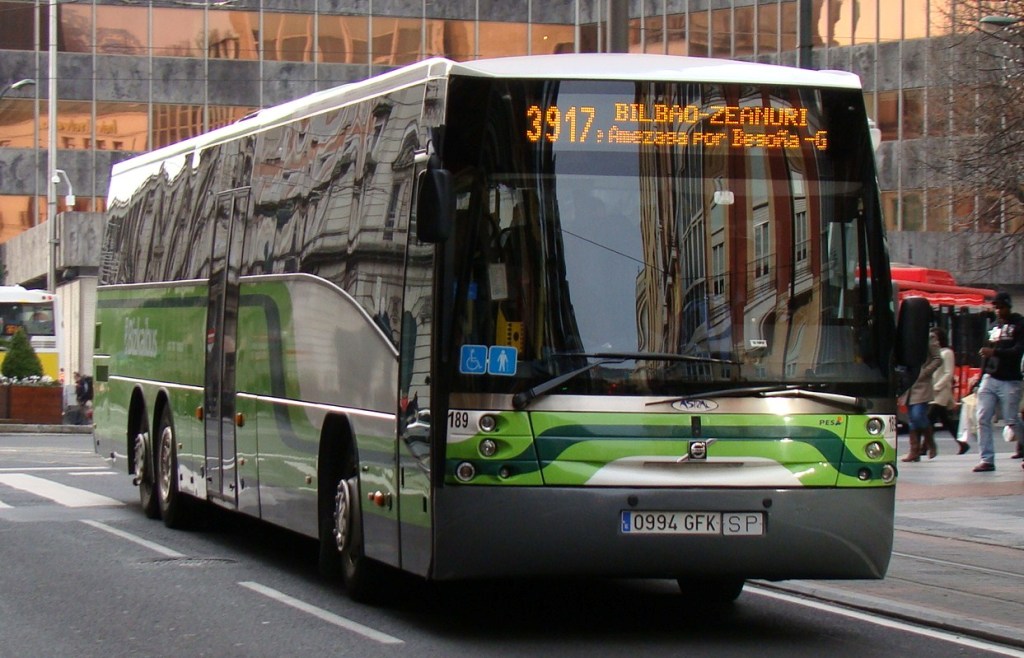
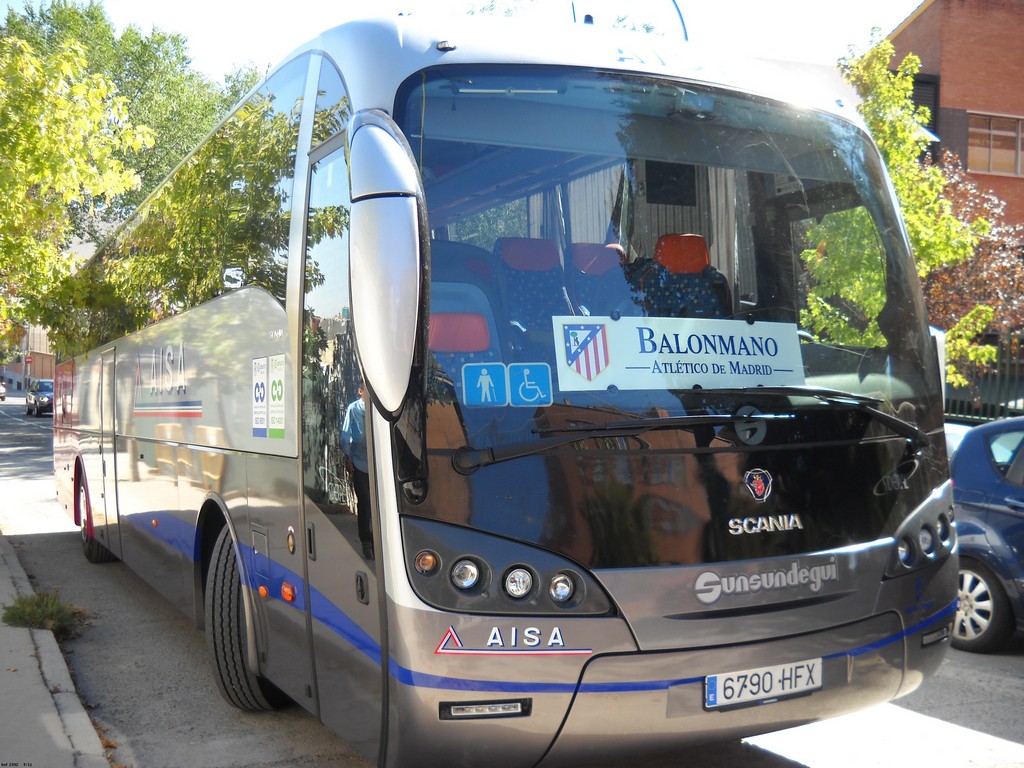

The Sideral 2000 was adapted to different versions such as a lower version called Sideral 330. Sunsundegui decided to create a vehicle that would be better adapted to the service of regular lines and small excursions, thus the Sideral 3.30 was born. Although it had a lower height and more spartan equipment than the Sideral 2000, its hold, however, had practically the same capacity. It was more adapted to the regular line, dispensing with some decorative or non-functional details.
In 2006 the Sideral 2000 was redesigned and the range was extended with the launch of the Sunsundegui Sideral 10. Sunsundegui Sideral 10. The vehicle was 10 meters long, 2.55 meters wide and 3.3 meters high. This model was bodyworked on a frame Volvo B7R and its main features were, both externally and internally, the same as those of the sidereal 2000 at 3.30 meters high, with the same reliability.

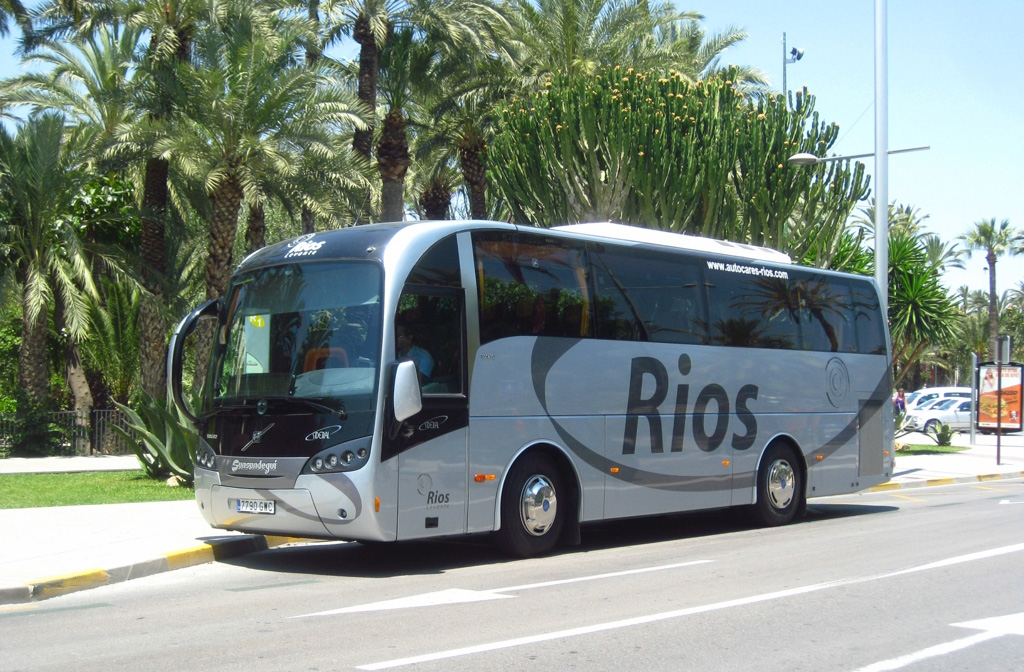
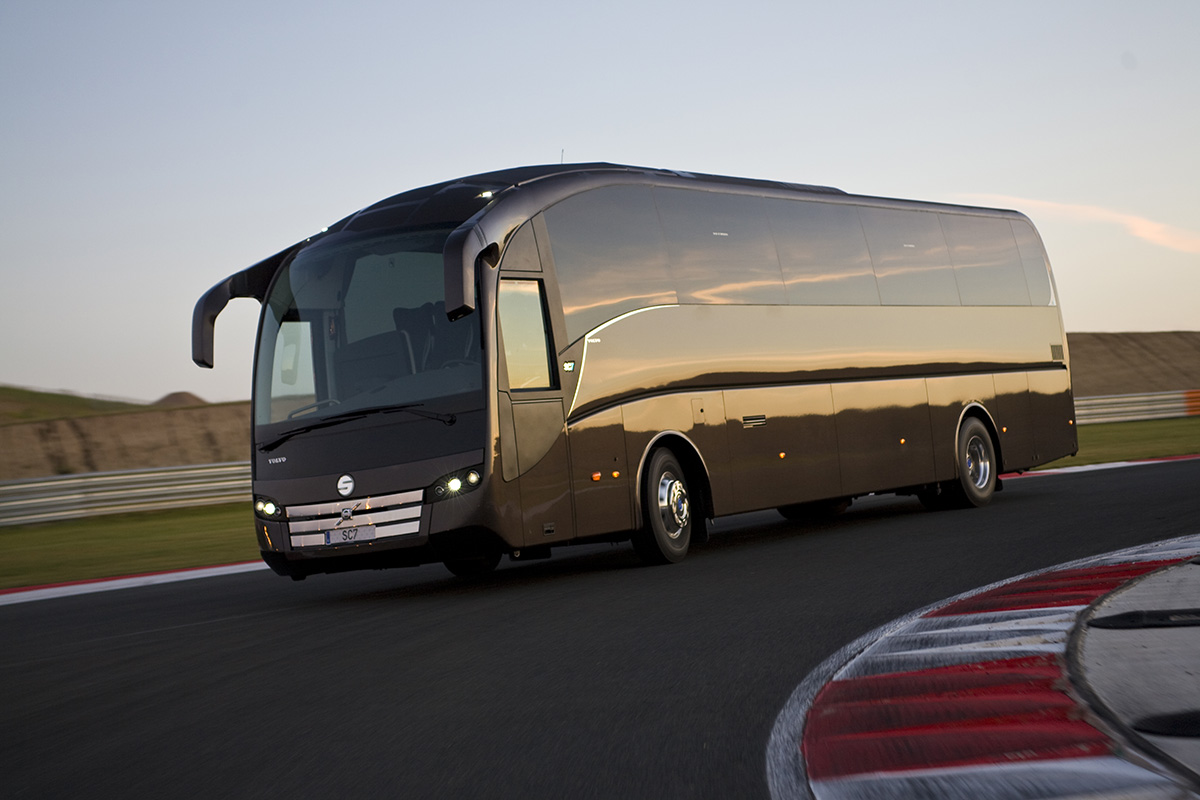


Sunsundegui surprises the market with its new SC7 model. The SC7 is Sunsundegui’s luxury coach designed for long distances, especially for regular and occasional services. It is characterized by its studied design and robustness. It is designed and developed to facilitate the driver’s work, provide a comfortable ride for passengers and be profitable for the operator. It has become a reference coach within the coachbuilding sector. It is available with Volvo, MAN, Scania and Mercedes Benz chassis, in 12, 13, 14 and 15 meters, with a height of 3.7 meters.
Sunsundegui begins to market the SC5 and the SB3. The SC5 is Sunsundegui’s new multi-purpose coach. It is characterized by its versatility and multifunctionality, since it is designed for commuter, school or company transport, but also for long distances. It is slightly lower than the SC7 but this only subtracts 9 cm of height from the cellar so its capacity remains practically the same. It has a design similar to that of the SC7, thus providing a general and common design for all Sunsundegui cars.

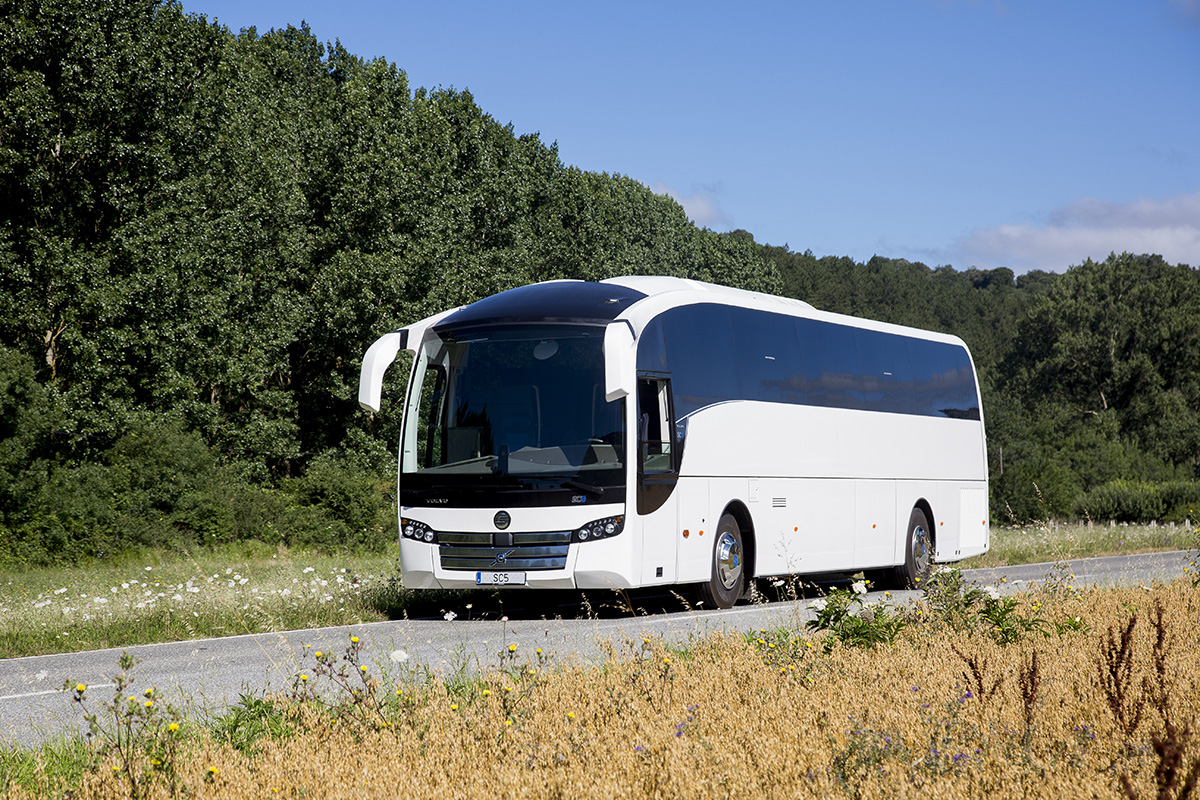
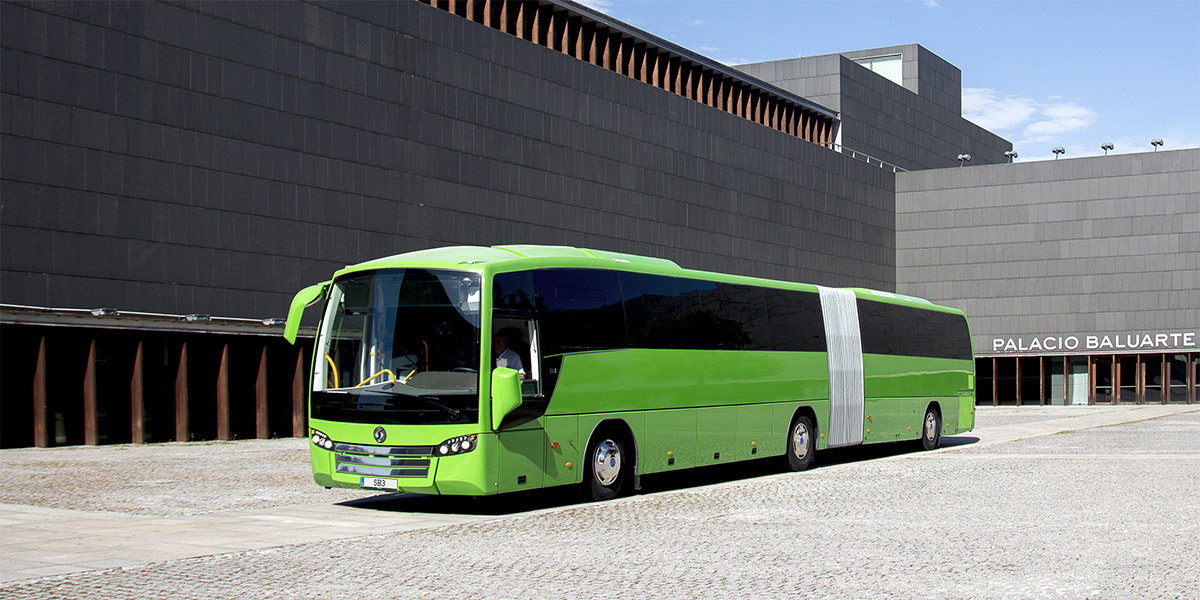

Designed for short and medium haul services. The concept of the new Sb3 Go is based on simplicity and functionality and features great modularity and versatility in its interiors.
The practicality and modernization of the controls and driving position make the Sb3 Go a competitive vehicle, oriented towards comfort and the benefit of the operator and passengers.

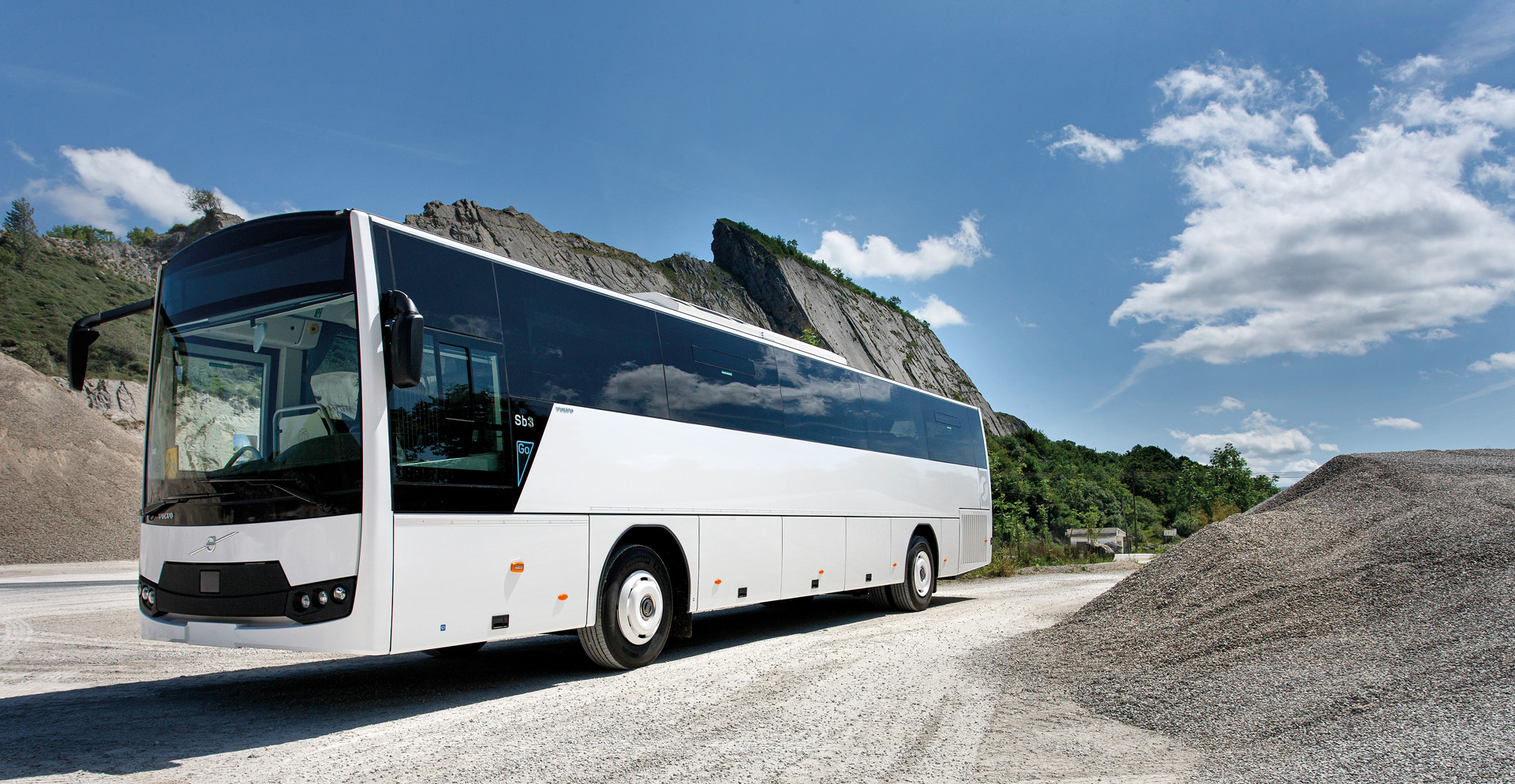
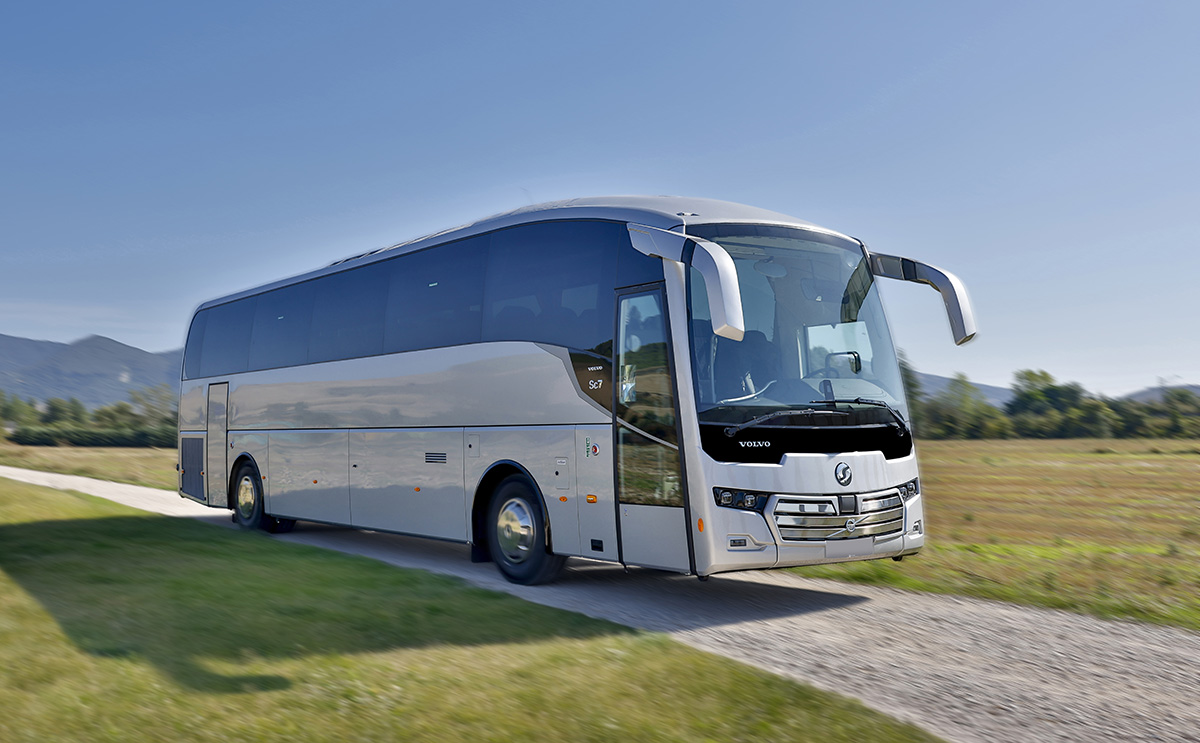



The first Sunsundegui workshop was founded in Irun in 1944 by Irun businessman Jose Sunsundegui.
The strategic location of the town, on the border between Spain and France, led to the location of the company, initially dedicated to the repair of railway equipment. The company moved to the Navarre town of Alsasua, an important point of railway development in the 20th century. At that time it was dedicated entirely to the repair of Renfe trains. When the state-owned company began to set up its own repair shops, Sunsundegui had to adapt to the new times.



In this situation, a new management group took over the company, which adapted its services to the repair and bodywork of trains and introduced the bodywork of buses and coaches.
The model designed for its expansion was the Korinto. Mounted on a DAF SB 3,000 chassis, with DKX 1,160 Ati engine, it had a transport capacity of 54 passengers in reclining seats, in addition to the driver and guide. The elements that characterized it at that time were the incorporation of air conditioning, heating by convectors, constant renewal of the interior air and the trunk capacity of approximately 10 m³.


In this decade Sunsundegui manufactured one of the models with which the company earned its reputation as a high quality coachbuilder: the Sunsundegui Stylo.
For several years, it was the coach of choice for the majority of large road passenger transport companies such as Alsa. A large part of its fleet consisted of this model, which was mounted on Mercedes 0-404 chassis. There was also the Articulated Stylo.


During these years the following models were also produced Vardimodels, which was a high-floor articulated coach and the VardinoThe company broke the mold in the coach production and bodywork sector with these high-floor rigid coaches. During this period, the company also produced special vehicles for different events, such as the now emblematic Sunsundegui Vardi which Sunsundegui coachbuilt for the 1992 Universal Exposition held in Seville.


Sunsundegui began to take off, thanks to the export of its vehicles to countries such as Israel and the United Kingdom. This led it to sign an important commercial agreement with Volvo to body the Swedish company’s motorized platforms, thus marketing a single product.
It was in this decade, specifically in 1993, when Sunsundegui created the Interstylo, with ample access spaces for passengers and adapted to disabled people, giving priority to passenger ergonomics. This model was also highly valued in the market for its robustness and reliability, in addition to its design.



This year Sunsundegui launches a new model: The Sunsundegui Sideral Sunsundegui Sideral. This vehicle stood out for its design of wide curved lines, for its great equipment and robustness. It set the standard for what future coaches were to be in terms of design. Once again, it was a vehicle with a great commercial success that helped to consolidate Sunsundegui’s reputation as a good coachbuilder and served as a model for the evolution towards what was later called the “Sunsundegui”. Sideral 2000.



Four years after its launch, Sunsundegui reinvents the Sideral, which is now called the Sideral 2000. True to the brand, the model once again stood out for its lines and equipment possibilities. It was a great improvement over its predecessor in all aspects. Occupant and driver comfort was one of the objectives. The asymmetrical rear-view mirrors so characteristic of the brand were also created for this model and are still used today on the SC7. Thus, Sunsundegui is the only bodybuilder able to offer its vehicle with two physiognomies.



During this period, Sunsundegui continues to create new models to meet all the needs of road passenger transport. Thus was born the AstralThe new Sunsundegui, a vehicle entirely designed and manufactured by Sunsundegui, a different car with the virtues of an intercity, functional, modern and cost-effective vehicle. It was in 2004 that a new Astral model was added to the fleet: the Astral Astral The articulated model that saw the light of day at the FIAA of the same year. It was an 18.75-meter vehicle, bodyworked on a Volvo B12MA chassis, with automatic transmission and 340 hp.


The Sideral 2000 was adapted to different versions such as a lower version called Sideral 330. Sunsundegui decided to create a vehicle that would be better adapted to the service of regular lines and small excursions, thus the Sideral 3.30 was born. Although it had a lower height and more spartan equipment than the Sideral 2000, its hold, however, had practically the same capacity. It was more adapted to the regular line, dispensing with some decorative or non-functional details.


In 2006 the Sideral 2000 was redesigned and the range was extended with the launch of the Sunsundegui Sideral 10. Sunsundegui Sideral 10. The vehicle was 10 meters long, 2.55 meters wide and 3.3 meters high. This model was bodyworked on a frame Volvo B7R and its main features were, both externally and internally, the same as those of the sidereal 2000 at 3.30 meters high, with the same reliability.



Sunsundegui surprises the market with its new SC7 model. The SC7 is Sunsundegui’s luxury coach designed for long distances, especially for regular and occasional services. It is characterized by its studied design and robustness. It is designed and developed to facilitate the driver’s work, provide a comfortable ride for passengers and be profitable for the operator. It has become a reference coach within the coachbuilding sector. It is available with Volvo, MAN, Scania and Mercedes Benz chassis, in 12, 13, 14 and 15 meters, with a height of 3.7 meters.


Sunsundegui begins to market the SC5 and the SB3. The SC5 is Sunsundegui’s new multi-purpose coach. It is characterized by its versatility and multifunctionality, since it is designed for commuter, school or company transport, but also for long distances. It is slightly lower than the SC7 but this only subtracts 9 cm of height from the cellar so its capacity remains practically the same. It has a design similar to that of the SC7, thus providing a general and common design for all Sunsundegui cars.




Designed for short and medium haul services. The concept of the new Sb3 Go is based on simplicity and functionality and features great modularity and versatility in its interiors.
The practicality and modernization of the controls and driving position make the Sb3 Go a competitive vehicle, oriented towards comfort and the benefit of the operator and passengers.



